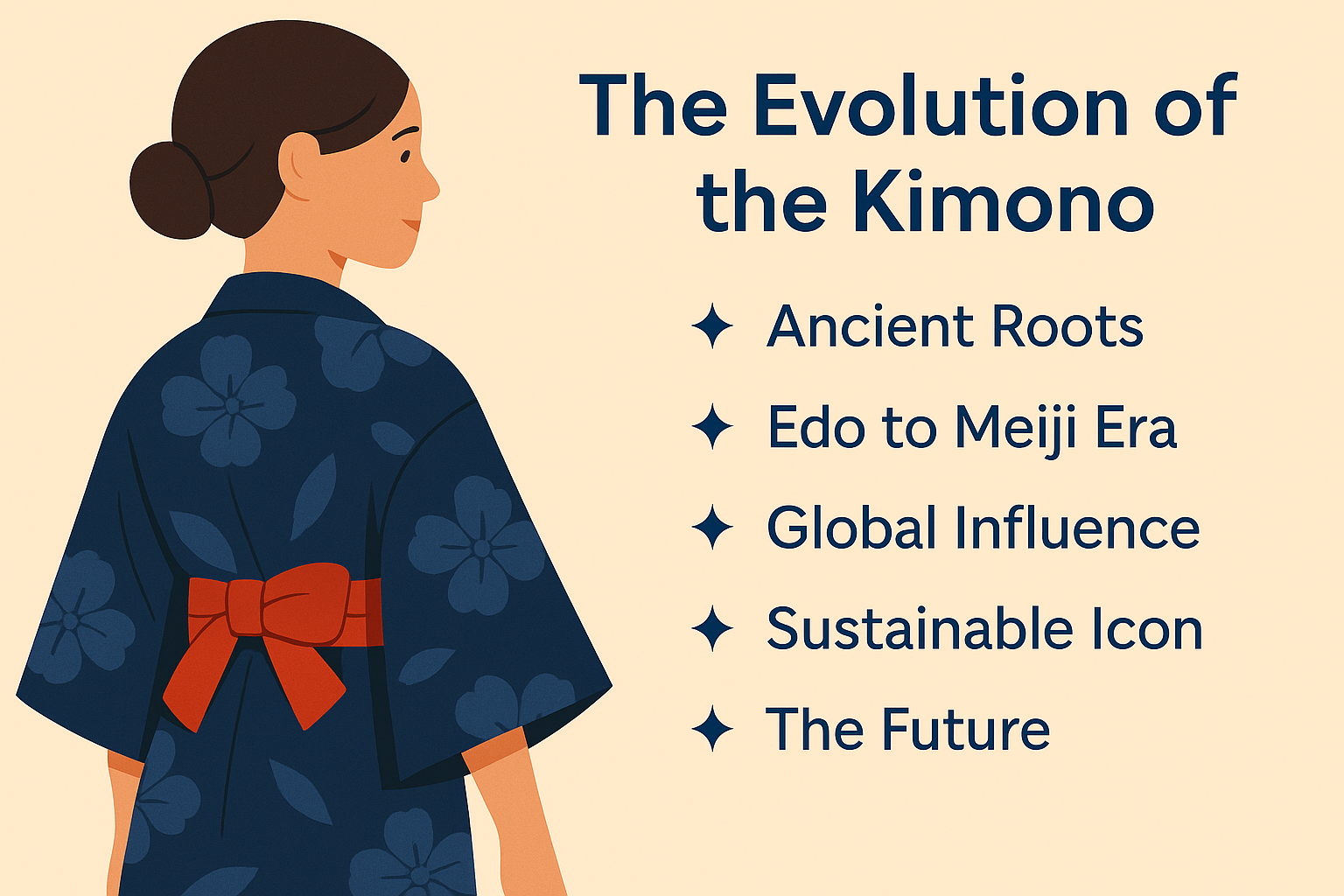The kimono is more than a garment—it’s a living symbol of culture, identity, and timeless design. Rooted in centuries of Japanese tradition, it has traveled across continents, inspired global designers, and transformed into a versatile piece of modern fashion. In this article, we’ll explore the evolution of the kimono, from its origins to its contemporary revival, and how it continues to inspire today’s conscious consumers.
1. Ancient Roots: The Birth of the Kimono
The kimono, meaning “thing to wear”, originated in Japan during the Heian period (794–1185). Initially designed for practicality, its straight-line cuts made it easy to wear, wash, and layer. Beyond function, the kimono soon became a canvas of social status and artistic expression:
-
Colors and patterns often reflected rank, age, or even the season.
-
Noble families commissioned artisans to create intricate hand-painted or embroidered designs.
-
The choice of fabric—from raw silk to hemp—reflected the wearer’s wealth and role.
📖 Learn more: History of the Kimono – Kyoto Costume Institute
2. Edo Period to Meiji Era: A Symbol of Refinement
By the Edo period (1603–1868), the kimono had become the dominant everyday clothing for men and women in Japan. With urbanization and the rise of merchant culture:
-
Kimono patterns told stories, often inspired by nature, mythology, or poetry.
-
Specialized artisans like yuzen dye masters elevated the craft into fine art.
-
During the Meiji era, Western influence began reshaping Japanese clothing, yet the kimono remained deeply tied to cultural ceremonies and milestones.
3. The Global Influence: From Couture to Streetwear
In the 20th century, the kimono made its way into global fashion:
-
Designers like Yves Saint Laurent, Alexander McQueen, and Issey Miyake incorporated kimono silhouettes into their collections.
-
The kimono inspired Hollywood wardrobes, from classic films to red-carpet looks.
-
Today, streetwear brands and slow fashion labels reinterpret the kimono into jackets, robes, and unisex garments, bridging heritage with modern aesthetics.
🌍 Inspiration: Kimono Exhibition – V&A Museum, London
4. Kimono as a Sustainable Icon
Why does the kimono matter in a world shifting toward sustainability?
-
Timelessness: Unlike fast-fashion trends, a kimono remains relevant for decades.
-
Versatility: One piece can transition from casual wear to formal events.
-
Ethical production: Many modern kimono-inspired brands now use organic cotton, recycled fabrics, and artisanal craftsmanship.
💡 Resource: Fashion Revolution – Sustainable Fashion Guide
5. The Future of the Kimono
Far from being a relic, the kimono is now at the forefront of conscious and cultural fashion. Designers around the world reinterpret it to:
-
Celebrate heritage and craftsmanship.
-
Support local artisans and fair-trade production.
-
Offer consumers a slow-fashion alternative to disposable clothing.
Final Thoughts
The kimono embodies a powerful truth: fashion can honor tradition while shaping the future. Whether worn in Tokyo, Paris, or Mexico City, it’s not just a garment—it’s a bridge between cultures, generations, and values. By choosing a kimono, you’re not only embracing timeless style but also participating in a movement toward sustainability and cultural appreciation.


